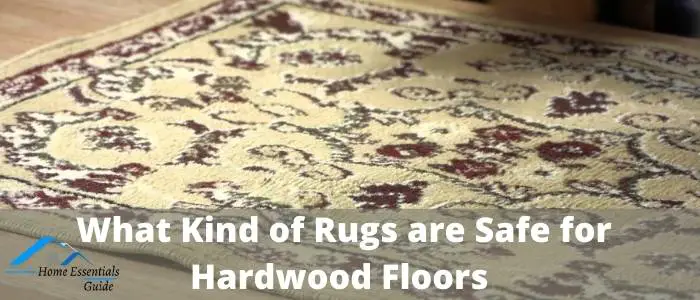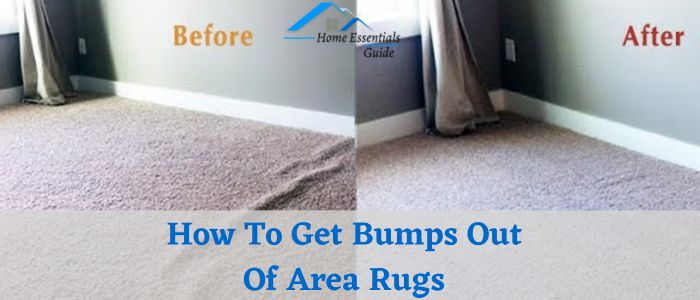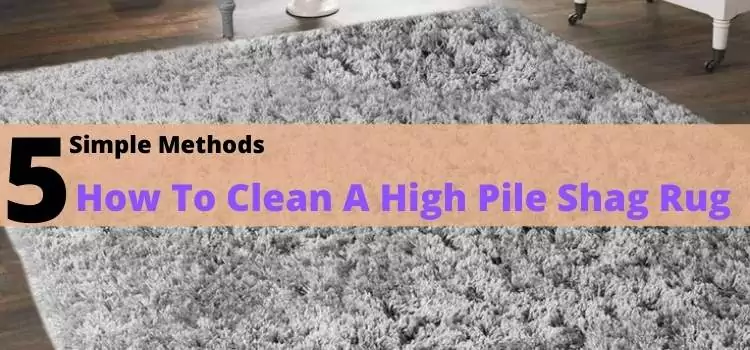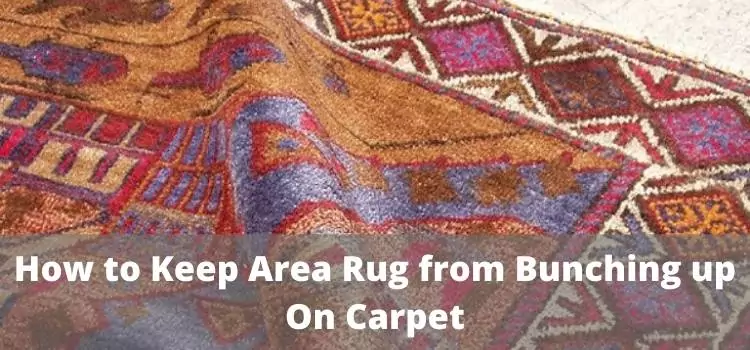To identify antique Persian rugs, examine their intricate designs, craftsmanship, materials, and signs of aging. Look for uniqueness in patterns and natural dye use.
Authenticating an antique Persian rug is an art that combines a keen eye for detail and knowledge of historical craftsmanship. Renowned for their exquisite beauty and intricate details, Persian rugs embody a rich history that reflects in their unique patterns, natural dyes, and superior knotting techniques.
Discerning collectors and enthusiasts seek out these timeless treasures, appreciating the skill and tradition woven into each piece. Factors such as knot density, color vibrancy, and artistic complexity play pivotal roles in determining authenticity and age. Recognizing a genuine antique Persian rug not only enhances a home’s decor but also serves as an investment in cultural artisanship. By paying close attention to specific characteristics, one can uncover the story and value behind these handcrafted masterpieces.
The Rich History Of Persian Rugs
The rich tapestry of history woven into Persian rugs is as intricate as the patterns on the rugs themselves. These timeless pieces are not merely floor coverings but narrators of ancient tales, carrying secrets from generations past. Delving into the rich history of Persian rugs reveals an astonishing blend of art, culture, and tradition. Let’s unfold the stories hidden within their threads.
Tracing The Origins
The journey of Persian rugs begins in the deep roots of ancient Persia, now modern-day Iran. The earliest records trace back to 500 B.C., suggesting these rugs were prized possessions of the noble class. Persians mastered the art of rug making with a sophistication far beyond their time, creating pieces esteemed by empires.
Evolution Across Centuries
Persian rugs have evolved over time, with each era bringing its unique influence. The weaving techniques, colors, and motifs have seen a remarkable transformation through history. Influences ranged from Mongol invasions to the rise of the Safavid dynasty, each leaving a distinct mark on rug designs.
- Silk Road Exchange: Added diverse patterns.
- Mongol Influence: Introduced new weaving techniques.
- Safavid Era: Elevated rugs to art, used in palaces.
Characteristics Of Persian Rugs
Persian rugs are treasured pieces of art with a rich history dating back thousands of years. These exquisite carpets are known for their intricate designs and superb craftsmanship. As you admire their beauty, it’s their unique characteristics that may hint at their historical and cultural significance. Let’s explore the distinctive features that set these antique treasures apart.
Unique Designs And Patterns
Each Persian rug tells a unique story through its design. The artisans weave intricate motifs into every piece, reflecting the heritage and the weaver’s own creativity. Look for these patterns and designs that are often seen in authentic Persian rugs:
- Medallions: Central, dominant shapes which are often repeated.
- Floral motifs: Stylized representations of nature and gardens.
- Geometric shapes: Non-floral patterns with straight lines and angles.
- Animal figures: Symbolic animals artistically depicted within the weave.
The balance of symmetry and color choice in these designs can reveal the rug’s origin.
Traditional Dyes And Materials
The dyes and materials used in Persian rugs are as important as the designs themselves. Antique rugs often feature:
| Natural Dyes | Materials Used |
|---|---|
| Indigo | Wool |
| Madder Root | Silk |
| Pomegranate Skin | Cotton |
These organic dyes create a rich, varied palette that matures beautifully over time and with exposure to light. The materials, meanwhile, contribute to the rug’s durability, texture, and sheen.
Distinguishing True Antiques
Antique Persian rugs are treasures from the past, but recognizing a real antique can be tricky. True antiques carry history, value, and timeless craftsmanship that distinguishes them from newer pieces. To help enthusiasts and collectors, we will dive into two major aspects to look out for.
Age Considerations
Antique Persian rugs are at least 80 years old. Dates are sometimes woven into the borders. Look for signs of aging, like a softened color palette due to natural dyes fading over time.
- Wear pattern: Uneven fading and wear show genuine age.
- Construction: Hand-knotted rugs have irregularities unique to handcrafting.
Signs Of Authenticity
Authentic Persian rugs have unique characteristics that set them apart.
| Feature | Description |
|---|---|
| Materials | Real antique Persian rugs use wool, silk, or cotton. |
| Knots | Persian rugs display fine knots, with up to 500 per square inch. |
| Design | Traditional designs include floral motifs, medallions, or geometric patterns. |
| Back | The rug’s back shows the true quality of the knots. |
Check the rug’s fringe. It should be an extension of the rug’s structure, not sewn on. Genuine rugs also have aging signs on the back.
Artisanal Techniques In Weaving
The craft of creating antique Persian rugs holds secrets passed through generations. Artisanal techniques define the authenticity and value of these rugs. Understanding these methods helps us appreciate the intricate craftsmanship involved.
Hand-knotting Methodologies
Hand-knotting is the heart of Persian rug creation. This traditional technique involves tying knots by hand on a specialized loom. Here’s a brief look at different knots:
- Senneh (Persian) Knot: A single looping technique that creates fine detail and durability.
- Ghiordes (Turkish) Knot: Featuring a double-loop, this method offers a more robust structure.
- Determine the type of hand-knot used.
- Count the knots per square inch for quality insight.
Influence Of Weave Density
Weave density in antique Persian rugs is key. It indicates skill level and time invested in a rug’s creation. Analyze the density:
| Knots Per Square Inch (KPSI) | Quality Indication |
|---|---|
| Less than 80 | Coarse weave, quicker to produce |
| 80-200 | Standard quality, balanced durability and detail |
| 200+ | Fine weave, high detail, and superior quality |
A higher KPSI often means more elaborate designs. These rugs take more time and skill to complete. Note the texture and flexibility of the rug, as these are good indicators of weave density.
Geographical Signature Styles
Unlocking the secrets of antique Persian rugs starts by exploring their geographical signature styles. Each region in Persia, now Iran, imparts its distinctive touch on these woven treasures. These styles tell stories, reveal historical influences, and show the essence of the place they represent.
Regional Variations
Antique Persian rugs boast a plethora of regional variations. Reflecting the diverse culture of Iran, these variations are like a regional fingerprint embedded in each weave:
- Kashan – Known for intricate floral patterns
- Tabriz – Offers a mix of medallion and floral designs
- Heriz – Recognizable by its geometric patterns
- Ispahan – Features fine detailing and luxurious materials
City Vs. Tribal Designs
Rug designs vary significantly between city workshops and tribal weavers:
| City Designs | Tribal Designs |
|---|---|
|
|
A city rug may feature delicate floral motifs and a fine weave, while a tribal rug bears bolder and more abstract elements. The rugs from cities reflect a curated artistry passed through generations of formal training. Tribal rugs, conversely, capture the spontaneous spirit of nomadic artisans.
Assessing Condition And Quality
Unveiling the true essence and value of an antique Persian rug involves a close look at its condition and quality. Both seasoned collectors and curious novices must understand how to examine these exquisite pieces. The details can tell the story of the rug’s craftsmanship and journey through time. Let’s explore the facets of assessing an antique rug’s condition and its impact on value.
Wear And Restoration
Regular aging reveals itself in an antique Persian rug’s patina. Typical wear patterns appear on popular stepping areas. A thorough inspection should check for repairs. Restoration quality can range from masterful reconstructions to poor patch-ups that affect the rug’s integrity.
- Look closely at fringe and edges.
- Scan for uneven coloring, which suggests dye restoration.
- Examine the backing for signs of stitching or new material.
Impact On Value
The rugs’ overall condition significantly influences its market value. Fine, original-conditioned pieces are rare gems that fetch higher prices. Presence of restorations, even when expertly done, can affect the price point, yet they do preserve the rug’s lifespan and aesthetic appeal.
| Feature | Impact on Value |
|---|---|
| Excellent Original Condition | Substantially increases value |
| Minimal Wear | May slightly increase value |
| Visible Restorations | Depending on quality, can decrease value |
| Heavy Wear | Typically decreases value |
Tips From Rug Appraisal Experts
Identifying an antique Persian rug can be like uncovering a treasure from the past. These rugs carry with them centuries of craftsmanship and history. Experts in rug appraisal provide valuable insights on what to look for when determining the authenticity and value of these intricate textiles.
Professional Evaluation Processes
Experts start with a thorough visual examination. They look for signs of age, wear patterns, and any restoration work. The materials and dyes used are also critical clues. Hand-spun wool and natural dyes are indicators of an authentic Persian rug. A close inspection of the weave can reveal the artisan’s hand at work; unevenness suggests hand weaving.
- Knot density – More knots per square inch adds value.
- Design complexity – Intricate patterns often signify higher quality.
- Origin – Certain regions are renowned for their unique rug styles.
Seeking Verification
Authenticity often demands documentary evidence. Skilled appraisers seek out signatures, maker’s marks, or provenance indicating the rug’s origins. Sometimes, a comparison with similar authenticated pieces provides substantial verification.
| Certificate of Authenticity | Historic Records | Physical Attributes |
|---|---|---|
| Ensures the rug’s genuineness | Links to its past ownership | Knot type, materials, and age |
An expert’s validation is essential to determine a rug’s value. Insist only on reliable sources and professionals who specialize in Persian textiles. Protect your investment and cherish a piece of history with confidence.
Maintaining And Protecting Your Antique Rug
An antique Persian rug is not just a floor covering but a piece of history. Keeping this treasure in top condition requires knowledge and care. Embrace the elegance and history of your rug while safeguarding its future through proper maintenance and protection.
Preservation Techniques
Preserving an antique Persian rug involves more than just good intentions. Follow these practical steps:
- Rotate your rug frequently to evenly distribute wear and exposure to sunlight.
- Use rug pads underneath to prevent slipping and to protect the rug’s structure.
- Control the climate in your rug’s environment; consistent, moderate humidity levels are ideal.
- Professional cleaning once every few years is vital for the longevity of your rug.
Avoiding Common Damages
Antique rugs face several potential hazards. Being aware of these can help you avoid common damages:
| Type of Damage | How to Avoid |
|---|---|
| Sun Fading | Keep your rug out of direct sunlight or use UV-protective window coverings. |
| Moisture and Mildew | Clean spills immediately and keep your rug dry to prevent mildew and rot. |
| Insect Damage | Regularly inspect for pests and consider natural deterrents like cedar blocks. |
| Excessive Wear | Avoid placing heavy furniture on your rug and remove shoes when walking on it. |
Legal And Ethical Considerations
Legal and Ethical Considerations play a pivotal role in the trade and collection of antique Persian rugs. Understanding these aspects ensures respect for cultural heritage and adherence to international laws. Collectors and enthusiasts must navigate these complex issues with care and responsibility.
Cultural Heritage Issues
Antique Persian rugs are not merely decorative items. They embody the rich tapestry of Persian culture and history. Many countries have strict export regulations to safeguard their cultural artifacts. International agreements like UNESCO’s 1970 Convention prohibit the illicit trade of cultural property. As a potential collector, you must ensure:
- Provenance: Verify the rug’s history and legal status.
- Legal Export: Confirm it left its country of origin lawfully.
- Cultural Sensitivity: Recognize the rug as part of a nation’s heritage.
Responsibilities Of Collectors
Collectors carry a duty to protect and preserve the integrity of antique Persian rugs. This includes:
- Ethical Acquisition: Purchase from reputable sources that follow legal frameworks.
- Conservation: Engage in practices that ensure the rug’s preservation.
- Education: Learn about the rug’s origins, designs, and cultural significance.
Starting Or Expanding Your Collection
Embarking on the journey of collecting antique Persian rugs is like uncovering a colorful tapestry of history with each piece. It’s not just about acquiring a rug; it’s about embracing a story, a tradition, and a form of art that dates back centuries. Whether you’re a budding collector or looking to grow your existing collection, the key is to build a sound foundation based on knowledge and trusted relationships.
Acquiring Knowledge
Understanding the nuances of antique Persian rugs is your first step. Each rug tells its own tale through patterns, colors, and knots. Here are ways to enhance your knowledge:
- Invest time in research through books and credible online resources.
- Join forums and follow blogs of esteemed collectors and historians.
- Attend workshops or talks hosted by experts in the field.
- Learn to identify the hallmarks of authenticity, such as weave patterns, dyes, and signatures.
Being informed not only aids in making wise purchases but also increases the joy of collecting.
Building Relationships With Dealers
Establishing a network with reputable dealers is crucial. These relationships can yield guidance, exclusive access, and quality pieces. Here’s how to connect with the right dealers:
- Visit local and national antique shops to start conversations.
- Ask for references from fellow collectors and attend rug auctions.
- Check credentials and reviews before committing to a dealer.
- Express your interest and intent clearly to help dealers find pieces that resonate with your taste.
Trust and communication are the foundation of these partnerships. Building a rapport with knowledgeable dealers can significantly enhance your collection and understanding of Persian rugs.
Frequently Asked Questions Of How To Identify Antique Persian Rugs
How Can I Tell How Old My Persian Rug Is?
To determine the age of a Persian rug, examine its wear patterns, material fading, and knot density. Consult an expert for precise dating.
How Do I Know If My Persian Rug Is Valuable?
Assess your Persian rug’s value by examining its age, craftsmanship, material, condition, and rarity. Antique pieces, fine knot density, natural dyes, and handmade origins typically indicate higher worth. Check for unique designs and historical significance as additional value markers.
How Do I Identify My Persian Rug Pattern?
To identify your Persian rug pattern, examine the design for common motifs like medallions, floral or garden elements, and animal figures. Check for repeating patterns and unique color combinations that may specify a particular region or weaving group.
How Do I Know What Antique Rug I Have?
To identify an antique rug, examine its design, material, weave, and origin, then compare it with known antique styles or consult an expert appraiser.
Conclusion
Antique Persian rugs embody artistry and history in every weave. Recognizing their value requires keen observation and knowledge. Remember, factors such as knot density, age, and design intricacy are your guides. Cherish the beauty and craftsmanship of these timeless pieces.
Let your newfound skills enrich your collection and interiors.




